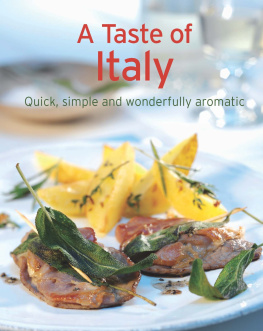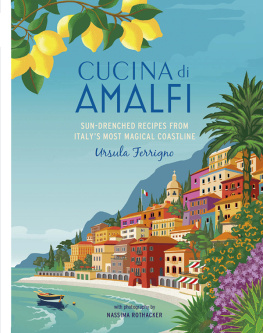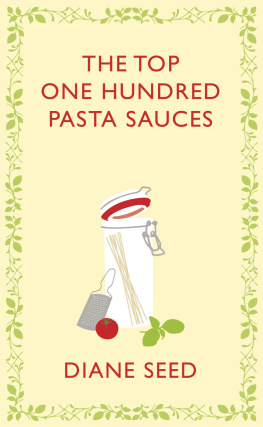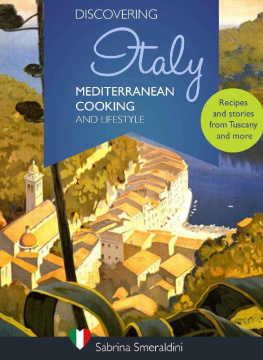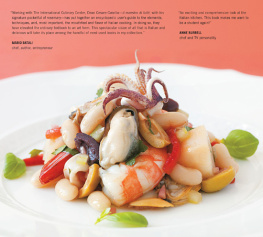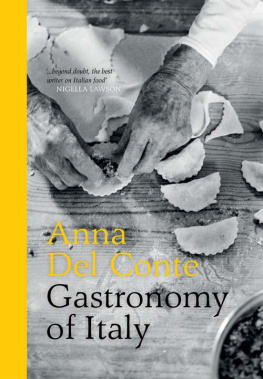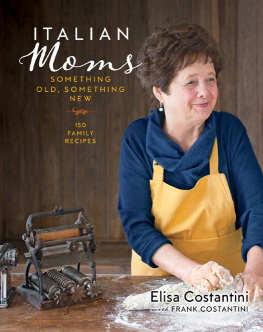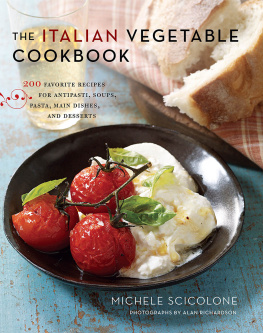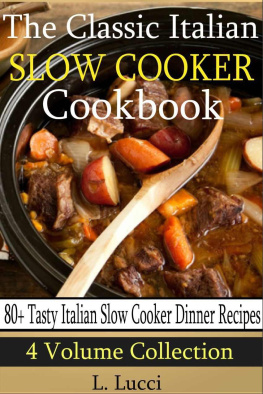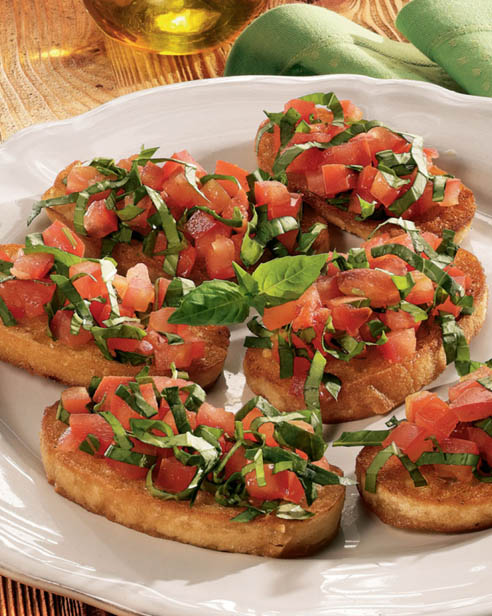Contents
A Taste of Italy Pizza, pasta and risotto, these are the most popular exports of Italian cuisine. Yet Italys regional cuisine has so much more to offer. This cookery book combines the traditional favourites, which everyone knows and loves, with some more unusual dishes which will easily put the local Italian restaurant in the shade. Aromatic antipasti and soups, hearty meat, fish and seafood dishes, delicious pasta and rice recipes, crispy pizzas and heavenly desserts our tempting recipes are bound to appeal to anyone who is a fan of Italian cookery. A Taste of Italy Naumann & Gbel Verlagsgesellschaft mbH
a subsidiary of VEMAG Verlags- und Medien Aktiengesellschaft
Emil-Hoffmann-Strae 1, 50996 Cologne (Germany)
www.vemag-medien.de
Recipe photographs: TLC Fotostudio
Cover photograph: StockFood/M. Urban
Translation from German: Susan Ghanouni, in association with First Edition Translations Ltd, Cambridge
Complete production: Naumann & Gbel Verlagsgesellschaft mbH
All rights reserved
ISBN 978-3-8155-8771-3
An appreciation of life and the art of living are values which have always been dear to the hearts of the people of Italy, a country in which the pleasures of eating and drinking figure prominently.
But what is so special about Italian food that it has come to be regarded as one of the worlds most popular types of cuisine? Mediterranean cuisine traditionally favours many light, healthy dishes, with an emphasis on fresh herbs, top-quality olive oil, fresh vegetables and fruit but also includes, it goes without saying, a wide variety of different pasta dishes. However, Italian cooking has far more to offer than merely pizza, pasta and risotto! An Italian meal generally begins with antipasti small hors doeuvres intended to stimulate the palate. These appetisers may be warm or cold dishes, consisting of vegetables, preserved in oil or vinegar with fresh herbs, of meat-, fish- or seafood-based titbits or even cheese and bread. The variety in this respect is infinite and every Italian cook has a preferred method of preparation. Soups are regarded as primo piatto dishes in other words, belonging to the first course after the antipasti. The most common of these include minestrone and tomato soup.
Vegetables are an extremely important ingredient in Italian cuisine and, on the grounds of climate alone, the country is regarded as the vegetable garden of Europe and most famously noted for its ripe, juicy tomatoes, although courgettes, aubergines and bell peppers are equally popular ingredients found in Italian cooking. Italian cuisine would be simply inconceivable without pasta, which is likewise served as a primo piatto dish. There are innumerable types and shapes of pasta and almost just as many different ways to prepare them. Whereas southern Italians prefer their pasta as a primo piatto, northern Italians are more likely to opt for polenta, a type of cornmeal porridge, seasoned with a spicy sauce, or risotto, a traditional rice dish from northern Italy. Italian pizza is a familiar item on menus all over the world. It is believed to have been invented by a Neapolitan baker, who rolled out leftover bread dough into a thin disc, which he proceeded to cover with vegetables, sliced sausage and ham.
By baking it in the oven, he created the first pizza.
Bread accompanies every meal in Italy and each region has its own assortment of traditional bread. Be it crostini, bruschetta, ciabatta, mini pizza rounds, pane Carasau or foccacia, no meal in Italy is complete without bread. Meat and poultry form part of the
secondo piatto, the second course of the menu, following any pasta or risotto. Dishes such as saltimbocca alla romana and ossobuco have meanwhile become famous all over the world. Italy is a boot-shaped country surrounded on three sides by sea.
It is no wonder, therefore, that fish and seafood feature prominently on Italian menus. Nor is it only the sea which provides such a generous harvest Italys lakes and rivers, including the large lakes of Lombardy, Lugano, Como and Garda, are similarly well stocked with fish. In Italy, the term dolci covers a wide variety of delicious desserts and sweets, ranging from pastries, tarts, cakes, preserved fruit, creamy desserts to ice cream. However, it is quite rare for a dessert to be served at the end of an Italian meal. It is far more usual to finish off a meal with a little cheese or fruit. 20 minutes (plus marinating, baking and cooking time)
Per portion approx. 110 kcal/461 kJ
9 g P, 1 g F, 13 g CH Serves 4 500 g small aubergines 500 g button mushrooms 125 ml olive oil 6 garlic cloves salt pepper 2 tbsp freshly chopped parsley 75 ml dry white wine juice and zest of 1 unwaxed lemon bunch thyme Pre-heat the oven to 200 C (Gas Mark 6, fan oven 180 C). 110 kcal/461 kJ
9 g P, 1 g F, 13 g CH Serves 4 500 g small aubergines 500 g button mushrooms 125 ml olive oil 6 garlic cloves salt pepper 2 tbsp freshly chopped parsley 75 ml dry white wine juice and zest of 1 unwaxed lemon bunch thyme Pre-heat the oven to 200 C (Gas Mark 6, fan oven 180 C).
Clean, wash and slice the aubergines. Clean and thoroughly wash the mushrooms. Brush the inside of a baking dish with 3 tablespoons of olive oil. Arrange the aubergine slices over the base of the baking dish. Peel and chop 4 garlic cloves, then sprinkle the chopped garlic over the aubergine and pour over 5 tablespoons of olive oil. 35 minutes in the oven before mixing the cooked aubergine with the parsley and leaving to marinate for at least 1 hour. 35 minutes in the oven before mixing the cooked aubergine with the parsley and leaving to marinate for at least 1 hour.
Heat 3 tablespoons of olive oil in a frying pan and saut the mushrooms well. Peel and chop the remaining garlic cloves. Add to the mushrooms along with the wine, lemon juice and zest, then continue to cook all the ingredients together. Wash the thyme and shake it dry, then add to the frying pan without chopping. Season with salt and pepper. Remove the mushrooms from the heat and leave to marinate for at least 2 hours.
Beef Carpaccio
Preparation time: approx. 20 minutes (plus freezing and marinating time)
Per portion approx. 260 kcal/1092 kJ
19 g P, 19 g F, 2 g CH Serves 4 300 g fillet of beef, fat and sinews removed 1 stick celery 2 tbsp lemon juice 6 tbsp olive oil salt pepper 50 g Parmesan or Grana Padano Place the beef fillet in the freezer for about 1 hour until it is semi-frozen, making it easier to slice very thinly. Clean and wash the celery, then dice the upper part of the stalk. Combine the lemon juice and oil, then season with salt. Whisk until the mixture forms a creamy sauce.
Arrange the beef slices on a platter, then sprinkle with freshly ground pepper and drizzle the sauce over the sliced beef. Cover the carpaccio with aluminium foil, then leave to marinate for approx. 30 minutes. Grate the cheese over the beef and add the diced celery. Bruschetta with tomatoes
Preparation time: approx. 178 kcal/749 kJ

